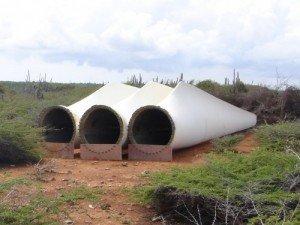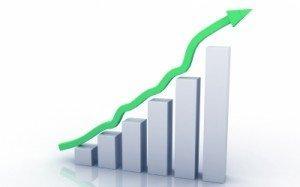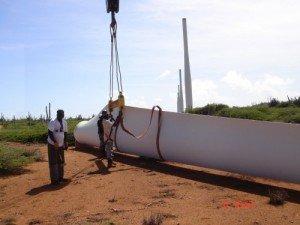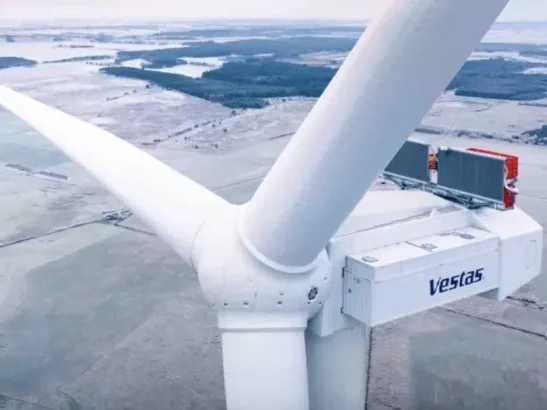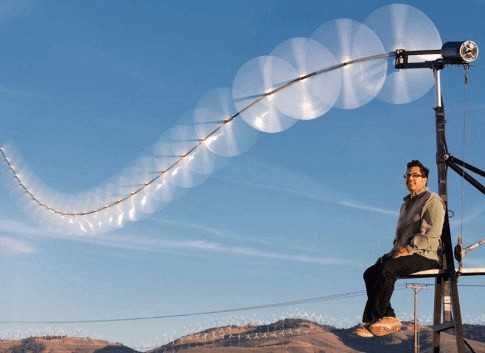Changes to Germany’s EEG (Renewable Sources Energy Act- Erneuerbare-Energien-Gesetz – EEG), due to come in on 1 August this year, are going to have a significant and deleterious effect on the second-hand wind turbine business. We know that Germany is still Europe’s largest clean-energy market. It wants to boost renewables to 80 percent or more by 2050. Indeed the country set a record for its wind energy generation on Dec. 6 last year when it peaked at just over 26,000 MW.
In Germany, like many other countries electricity from renewable sources is supported through a Government feed-in tariff. The criteria for eligibility and the tariff levels are set out in the EEG Act. Operators of renewable energy plants are statutorily entitled to payments for electricity exported to the grid by the energy operating companies. The EEG also introduced the concept of the “market premium and the flexibility premium” for plant operators who directly sell their electricity from renewable sources. In addition low interest loans for investments in new plants are provided for by different German KfW-Programmes.
Let’s look at both the good and the not-so-good. The not-so-good first:
It is (or soon was) no secret that the majority of used & second hand wind turbines (especially good conditioned & the well maintained ones) in sizes of 50kW – 1,5mW (or of late even larger turbines) were and are easily sourced from Germany. The simple explanation for this un-proportional high ratio of second hand & used wind turbines coming from Germany compared to other countries who have a long history of renewable wind energy activity and significant five figure mW generation output such as Denmark, Holland, Spain or Scandinavian countries is because of Germany’s ‘ultra’ attractive repowering bonus incentive scheme being in place for a number of years now which was introduced as an incentive to take down and replace older technology and smaller sized wind turbines which are also often scattered around in the landscape in only small numbers, often having a negative visual impact effect in rural areas, with newer technology design and substantially higher output and higher productivity wind turbines.
From the very start of the introduction of the repowering bonus under the EEG legislation, an immediate impact on the second hand & used wind turbine could be noticed with large numbers of turbines being taken down and offered for sale on the used turbines market. This re-powering incentive payment is going to stop at the end of this year and that will have a significant impact on the availability and consequently the market value and average sales price of used wind turbines. This re-powering bonus was an incentive payment for anyone with an older wind turbine to gain a financial reward of €100,000 EUR regardless of its size, small or large kW/mW technology. This sum was available to the owner of the wind turbine or any other developer for replacing an old turbine with a newer larger and more efficient turbine and in support of obtaining planning permission for large scale wind farms in the same or bordering council district . This provision of the Bill has gained less attention in the media than the other aspects (discussed later on in this article) but its effect on the second-hand and used wind turbine market will be truly significant. The re-powering bonus will not be renewed. So after 2014, there will be no cash incentive for any owner of an older turbine which has fully recouped its initial cost of investment, to upgrade to newer and more efficient wind turbines or to transfer the re-powering bonus rights to a wind farm developer.
With the continued and increasing demand for used wind turbines in the size of 50kW – 500kW coming from countries such as Italy, England, Scotland, Wales and Northern Ireland for example, where newly introduced high feed-in-tariffs are being offered and guaranteed for up to 20 years for this size turbines and the predicted decrease of the number of used wind turbines being made available will for certain fall victim to the No. 1 Free Market Economy Rule: SUPPLY vs. DEMAND …is what dictates a price.
This hasn’t provoked the debate it should have done. Think about it. It will encourage wind farm operators or small scale private single wind turbine owners to keep their old and less efficient wind turbines going until they finally give up the ghost or as long as the revenue generated doesn’t significantly fall below the cost for upkeep and maintenance. It means that the major source GERMANY for supply of second-hand wind turbines to the market will drastically dry up by the end of this year 2014. Due to the uncertainty that owners of older turbines will be able to meet the end of year deadline, we have already noticed a drastic fall of available turbines being offered from Germany and turbines that will eventually still come onto the market for sale will most likely be unworthy, over priced and very run down and worn out turbines of the like we keep seeing coming from countries such as Denmark or Holland where such incentive never existed and owners only ever offer their turbines for sale until they are technically at the end of their lives and in need of a costly total overhaul refurbishment.
Until recently, 8 out of 10 second-hand wind turbines come from Germany. We predict that this ratio will most likely be reversed numbers in the very near future i.e. only 2 or 3 out of 10 used wind turbines will come from Germany and the rest from other countries which number of supply is unlikely to rise at all. This is not conjecture- this is already the situation in the United States where there is no re-powering bonus. There is virtually no second-hand wind turbine market for US-based turbines and turbines are usually “run into the ground” and operated until they are good only for the scrap-yard.
All this at a time when the demand for used wind turbines is increasing dramatically, especially as previously mentioned from countries like Italy and the UK including Northern Ireland. The result, if these amendments are approved by the German Parliament, will be that the availability of second-hand wind turbines will decrease dramatically and of course the prices they can fetch will go through the roof. This is just simple supply and demand economics. The demand is high and the supply will be low, so prices for used wind turbines will sky rocket through the roof.
Here at MWPS the uncertainty is already fuelling increased bids for second-hand turbines and “gazumping” (offering more than the asking price over and well above lower bids). If you are thinking of buying a second-hand turbine, the message is BUY NOW, before the supply tails off to virtually nothing and prices for 50kW – 500kW turbines will rise astronomically.
To be frank, the re-powering bonus was exceedingly generous and came with few conditions. Yes, €100,000 EUR to the owner just for taking the turbine down. The owner or developer does not even have to actually replace the turbine at the site. A developer just has to obtain a planning permit for a larger, newer turbine in either the same council or neighbouring council provided they purchase the re-powering rights from the owner of the old turbine.
This was the reason behind so many well-serviced and good conditioned used turbines becoming available from Germany. The re-powering bonus is just too attractive to ignore: You have an old turbine which made all its money back and you get the opportunity to receive €100,000 EUR just to take it down, plus you get the selling price on top, plus you don’t even need to replace the turbine. Another (large scale) developer will use the rights to put up a larger turbine.
So if the re-powering bonus isn’t maintained, wind turbine owners and developers have no reason to “trade-up” and sell the turbine after the end of this year. They will keep their turbines working until they come to the end of their mechanical and useful life. If they then come on to the market they will be run-down and of little value to anyone except as scrap, similar to second-hand wind turbines coming from Norway and Denmark.
The good is that it is indisputable that the EEG has been very successful in encouraging the expansion of renewable energy in Germany. But there has been growing concern about the rising cost burden being placed on electricity consumers in the country. On 11 July the German Parliament is likely to agree to change important parts of the EEG Act, to come into effect at the beginning of the new month, 1 August 2014.
The aim of the changes, as officially stated, is to cut the costs of supporting renewables, as from 1 August 2014, by increasing the exposure of renewable energy sources to market forces, while still ensuring and encouraging continued renewable growth. The final bill will also include provisions for reducing the EEG surcharge for energy-intensive industries, following the conclusion of discussions with the European Commission last April. The amended EEG Act will apply to all new renewable plants starting operation on or after 1 August 2014. However it is important to bear in mind that this is still to come before the German Parliament and may be subject to amendments.
Renewable energy growth will be encouraged so that renewables have a share of 40-45% of total electricity production by 2025 and 55-60% by 2035 (for comparison the 2013 figure was about 23.8% according to BDEW (German Association of Energy and Water Industries)).
The bill introduces what are described as new expansion “corridors” – for the support of renewable power plants under the EEG so as to achieve steadier growth but avoid sharp cost increases.
The individual corridors are, as of today, as follows:
- Onshore wind power: annual growth of up to 2500 MW, net of capacity that is permanently decommissioned;
- Offshore wind power: reduction of the national targets for offshore wind power from 10 GW to 6.5 GW by 2020 and from 25 GW to 15 GW by 2030;
- Solar power: annual growth of up to 2500 MW, gross amount, with only new capacity counting, so no deductions of capacity that has been decommissioned;
- Biomass: annual growth of 100 MW, gross amount, again with only new capacity counted, so no deductions of capacity that has been decommissioned and new capacity arising from expansion of existing biomass power plants not counted in the annual growth target.
To make German renewables support more market-oriented, a major departure from the previous EEG is proposed:
At present, most renewable power plant operators can receive feed-in tariffs. Operators can also voluntarily decide to sell green electricity directly and claim a marketing premium in addition to the revenue obtained. Under the EEG 2014 proposed amendments direct marketing will be the rule and only in exceptional cases will the operators of renewable plants receive feed-in tariffs. One exception present in the Bill is small renewable power plants, in particular: plants that will be commissioned before 1 January 2016 with an installed capacity of less than 500 kW; plants that will be commissioned after 31 December 2015 and before 1 January 2017 with an installed capacity of less than 250 kW; and finally plants that will be commissioned after 31 December 2016 with an installed capacity of less than 100 kW. The applicable feed-in tariffs for these small plants will be reduced by 0.4 cent/kWh for wind (onshore and offshore) and solar energy, with a reduction of 0.2 ct/kWh for all other renewable energy sources.
There are other exceptions, for example, if operators are unable to market the energy directly. In this case, however feed-in tariffs are reduced by 20% to encourage direct marketing. Also self-generated and self-consumed power is exempted from the EEG surcharge if the electricity is not transmitted via a grid or used in the vicinity of the electricity-generating installation.
According to the proposed EEG 2014 legislation, financial support for renewable energy sources will be determined through auctions by 2017 at the latest.

